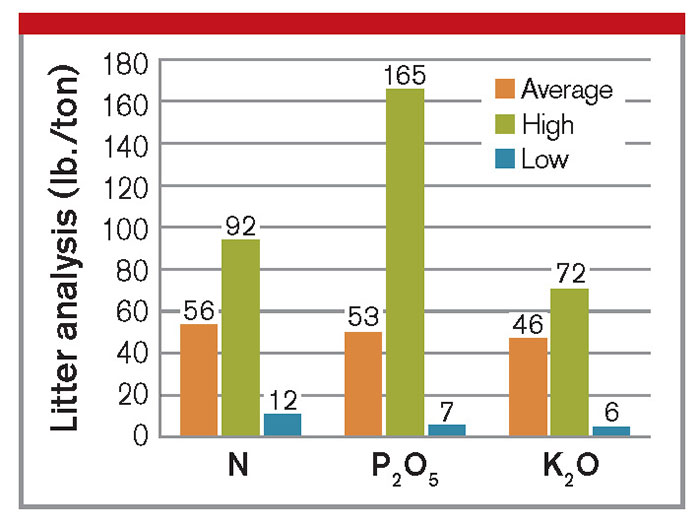
Poultry litter can serve as a significant source of crop nutrients for states near large poultry producing areas. Peter Tomlinson and Dorivar Ruiz Diaz of Kansas State Research and Extension shared details about litter content and how it can be used in a K-State Agronomy eUpdate newsletter.
Their analysis of 213 poultry manure samples showed the variation that exists in poultry litter. While the average pounds of nitrogen (N) per ton of litter was 56, there was a range of 12 to 92 pounds per ton. The spread was even greater for phosphorus (P), which averaged 53 pounds per ton but varied from 7 to 165 pounds. Potassium (K) samples fell between 6 and 72 pounds per ton, with 46 pounds as the average.
As for crop availability, the authors explained that N is primarily in the organic form in poultry litter, up to 80%. Organic N needs to mineralize before becoming available to crops. Studies have shown that approximately 45% to 55% of the total N becomes available to the plant the first year of application. Reduction of N availability may occur when the litter is aged or has gone through some level of composting. Ammonium volatilization is usually higher on warm, windy days, but incorporation can reduce this loss and potential runoff losses.
On the flip side, a large fraction of manure P is available immediately after application, between 50% and 100%. Similarly, nearly 100% of K is available with proper application.
Moisture content and nutrient concentration can be highly variable, depending on production conditions, storage, and handling methods. The authors reminded farmers that laboratory analysis is the best way to determine the level of nutrients in the litter.
This article appeared in the February 2021 issue of Journal of Nutrient Management on page 13.
Not a subscriber? Click to get the print magazine.









